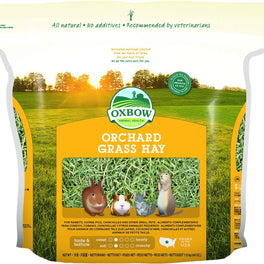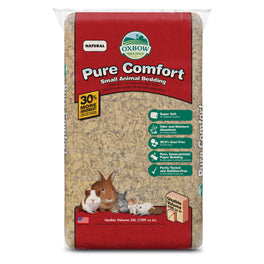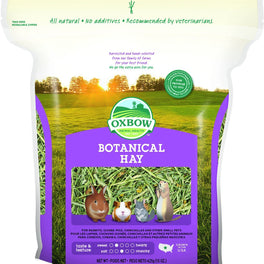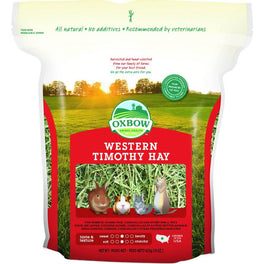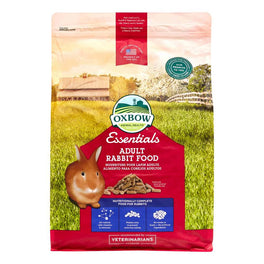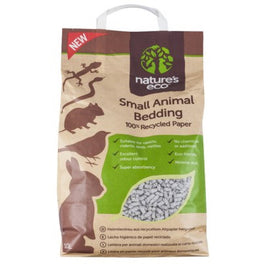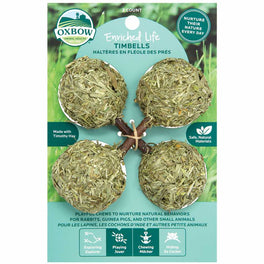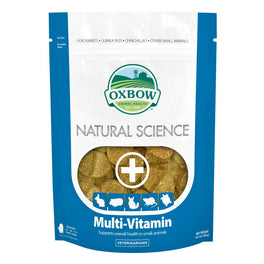FREE SHIPPING over $60. Order in next 7h 55m for delivery by Apr 23rd
15% OFF: Oxbow Orchard Grass Hay 40oz
S$22.80
S$26.80
- Animals love the sweet smell and taste of leafy Oxbow Orchard Grass Hay, and that makes it a good addition to an herbivores healthy meal plan.
- Show More Product Info
You Get Free Delivery
Delivered in 3 days
Earn 23 loyalty points
Save on your next order
Frequently Bought Together
Orchard Grass is a green, fruity-smelling grass hay which many small animals enjoy. To the untrained eye, it looks identical to timothy grass, but the seed heads have a different shape.
Orchard Grass is a perennial cool season grass with flat leaf blades. The leaves vary in color from green to bluish-green depending on the maturity of the plant. The lower surface of the leaf is not shiny; and leaf sheaths can be somewhat rougher to the touch than timothy.
Orchard Grass is recommended by veterinarians for small herbivores due to the nutritional content. Orchard Grass can be mixed with other grass hays when feeding your pet. This is encouraged because animals seem to like the variety. Mixing your grasses will encourage them to eat more hay, which is beneficial to the health of the animal.
Hay is absolutely vital to the health of small herbivores. Orchard Grass also provides a long-strand fiber source that is needed to improve the digestive and intestinal functions by stimulating the digestive system. When animals are fed free-choice hay, it promotes their natural chewing behavior, which helps prevent molar spurs and other dental problems that are so common in these small herbivores.
- Crude Fat min 1.50%
- Crude Fiber max 32.00%
- Moisture max 15.00%
All Ingredients
100% Orchard Grass Preservative and Additive Free. Loose hay contains stems, leaves, and limited seed heads.Mature Animals: Unlimited amounts
Orchard Grass can be fed free choice to rabbits, guinea pigs, chinchillas, prairie dogs and other herbivores as an alternative to timothy, oat hay, and brome. Free-choice means that the feed is available at all times. If they finish what is given, you need to give them more! Hay should not only be used for nutritional purposes, but also for mental stimulation and the promotion of natural foraging behavior.
Try feeding hay in new and inventive ways to increase consumption.
- Rabbits like to eat hay in their litter box.
- Fill a cardboard tube, basket or animal-safe toy with hay and place it in your pets favorite spot.
- Put a layer of hay on the bottom of the cage and hide food/treats in the hay for foraging.
- Put hay everywhere: the hutch, the corner, behind the couch, etc...
- Offer a variety of mixed hays to tempt animals with sophisticated tastes.
How much do I feed daily?
It should be fed free choice daily. That means the hay should be available at all times. 75% of a small herbivores diet should be hay.
Oxbow
Oxbow enriches the lives of small pets with a variety of high-quality hay, life-staged foods, and supportive care products. Their commitment to animal health and wellness is evident in their specialized nutrition, which is crafted with the guidance of veterinarians. Oxbow stands out for its dedication to education and the use of sustainable practices to deliver premium, science-backed pet essentials.
View All Oxbow ProductsDelivered in 3 days
We will contact you within 3 working days to arrange your preferred delivery date and time.
Get FREE Delivery
Delivery is FREE for orders S$60 and above. If your order falls below S$60, there will be a delivery charge of S$8.
Browse For Similar Products
About Oxbow
Oxbow enriches the lives of small pets with a variety of high-quality hay, life-staged foods, and supportive care products. Their commitment to animal health and wellness is evident in their specialized nutrition, which is crafted with the guidance of veterinarians. Oxbow stands out for its dedication to education and the use of sustainable practices to deliver premium, science-backed pet essentials.
View All Oxbow Products

